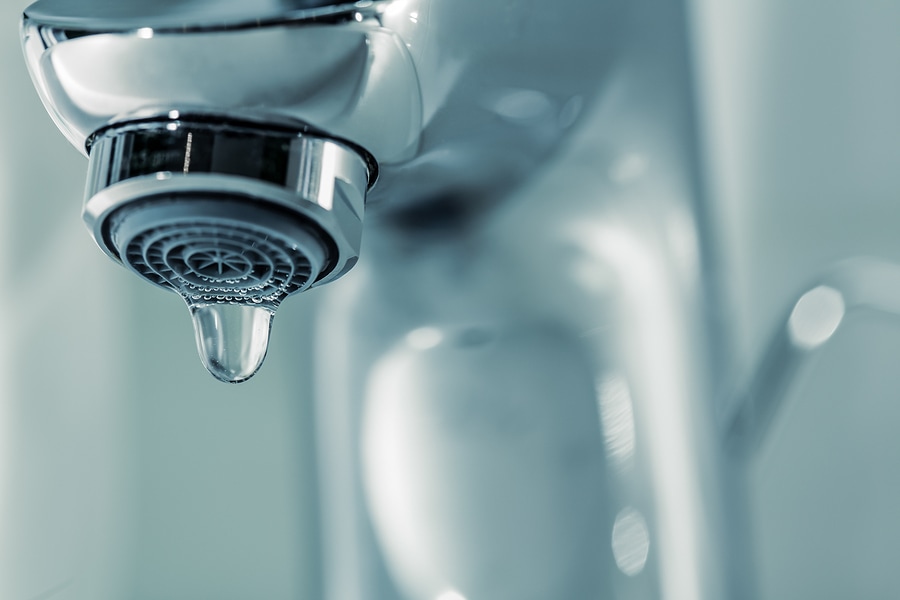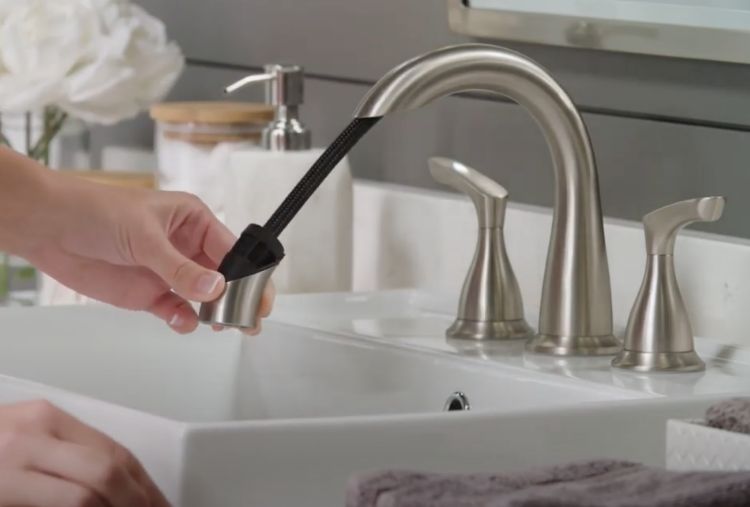Exploring the Importance of Resolving a Faulty Faucet
Exploring the Importance of Resolving a Faulty Faucet
Blog Article
Any individual has his or her own rationale with regards to How to Fix a Dripping or Leaky Faucet .

Trickling taps may look like a small hassle, yet their impact exceeds simply the aggravation of the sound. From drainage to sustaining unnecessary economic costs and health dangers, neglecting a trickling faucet can bring about different repercussions. In this post, we'll delve into why it's important to resolve this usual home issue immediately and efficiently.
Wastefulness of Water
Ecological Effect
Dripping faucets contribute substantially to water waste. According to the Epa (EPA), a solitary tap leaking at one drip per second can lose greater than 3,000 gallons of water per year. This not only pressures water resources but additionally influences ecosystems and wild animals based on them.
Step-by-Step Overview to Taking Care Of a Dripping Tap
Tools Called for
Prior to trying to fix a trickling tap, gather the needed tools, consisting of an adjustable wrench, screwdrivers, replacement components (such as washing machines or cartridges), and plumber's tape.
Typical Faucet Issues and Their Solutions
Identify the kind of faucet and the certain issue triggering the drip. Common troubles include worn-out washing machines, corroded shutoff seats, or defective O-rings. Refer to producer instructions or on the internet tutorials for detailed assistance on repair services.
Financial Prices
Raised Water Costs
Past the environmental impact, dripping faucets can blow up water bills substantially. The collected wastage gradually equates into higher utility costs, which could have been avoided with timely repairs.
Possible Residential Property Damages
In addition, long term trickling can bring about harm to components and surfaces surrounding the tap. Water build-up can create discoloration, corrosion, and also structural problems if left unattended, leading to added repair work costs.
Wellness Worries
Mold and Mold Growth
The continuous existence of moisture from a trickling faucet creates a suitable atmosphere for mold and mildew and mold growth. These fungi not only endanger interior air quality yet also present health risks, specifically for individuals with breathing problems or allergic reactions.
Waterborne Illness
Stationary water in trickling faucets can become a breeding place for microorganisms and other virus, enhancing the threat of waterborne conditions. Impurities such as Legionella bacteria prosper in stagnant water, possibly leading to severe health problems when consumed or inhaled.
Do it yourself vs. Expert Fixing
Pros and Cons of DIY Repair
While some may try to repair a leaking faucet themselves, DIY repair services include their very own set of challenges. Without correct understanding and tools, do it yourself efforts can aggravate the problem or result in incomplete repairs, extending the trouble.
Advantages of Employing a Professional Plumber
Employing an expert plumber makes sure that the underlying root cause of the dripping tap is resolved efficiently. Plumbing technicians possess the experience and devices to detect and repair faucet concerns successfully, conserving time and lessening the threat of further damages.
Environmental Responsibility
Specific Payment to Preservation
Taking obligation for fixing leaking faucets straightens with broader initiatives toward water preservation and ecological sustainability. Every individual's activities jointly make a considerable influence on protecting valuable sources.
Lasting Living Practices
By prioritizing punctual repairs and embracing water-saving habits, individuals contribute to lasting living practices that profit both present and future generations.
Safety nets
Routine Upkeep Tips
To avoid dripping faucets, perform routine upkeep such as cleansing aerators, inspecting for leakages, and replacing worn-out parts without delay. Furthermore, think about installing water-saving tools or updating to extra effective fixtures.
Value of Prompt Services
Addressing trickling faucets as soon as they're observed protects against further water wastage and possible damage, eventually conserving both water and money over time.
Influence On Property Value
Understanding of Well-Maintained Home
Preserving a home in good condition, including addressing upkeep problems like trickling faucets, boosts its perceived value and charm among potential customers or tenants.
Impact on Resale Worth
Features with properly maintained plumbing fixtures, including faucets, command higher resale values in the realty market. Dealing with leaking faucets can contribute to a favorable impact throughout property assessments and settlements.
Conclusion
Dealing with a leaking tap surpasses plain ease; it's a crucial action towards conserving water, minimizing economic costs, and protecting wellness and home. Whether with do it yourself fixings or professional assistance, doing something about it to deal with leaking faucets is a little yet impactful means to advertise accountable stewardship of resources and add to a much healthier, much more lasting future.
How to Fix a Leaky Faucet: Step-by-Step Repair Guide
A leaky faucet may seem like a simple annoyance, but if it's not fixed promptly, that leak could cost hundreds to potentially thousands. From water damage to mold, mildew, and high water bills, even a tiny leak can be catastrophic if left unattended. Damage like this can even affect the overall value of your home, so it's important to take the right approach for leaky faucet repair. You may need the help of a plumber in some cases, but we've got a few tips you can try on how to fix a leaky faucet before calling the pros.
Four Faucet Types
When you're learning how to fix a leaky faucet, the first step is knowing what kind of faucet you're working with! There are four common types.
Cartridge Faucets
Cartridge faucets come in one- or two-handled varieties. In one-handled cartridge faucets, hot and cold water combines in a single cartridge. In the two-handled versions, hot and cold water are controlled separately and mixed in the faucet.
Ball Faucets
Ball faucets have a single lever you push up and down to adjust the pressure and rotate to change the temperature. A slotted metal ball controls the amount of water allowed into the spout.
Compression Washer Faucets
They're the oldest type of faucet, but they're still used in many homes — especially older ones. Compression faucets have two separate handles that, when turned, raise or lower the washer that seals a water valve. This valve stops water from flowing through the faucet when it is turned off.
Disc Faucets
Disc faucets rarely need to be repaired due to their maintenance-free design. The water flow is controlled by two discs — the upper one raises and lowers against a fixed lower disc, creating a watertight seal. If your disc faucet starts leaking, you may need to replace the seals or clean residue buildup from the inlets.
Fixing a Leaky Faucet
Step 1: Turn Off the Water
Whether you're learning how to fix a leaky bathtub faucet or how to fix a leaky kitchen faucet, always turn off the water supply to your working area when you're fixing a leak. The last thing you want is a flood added to your list of things to fix.
Look for the shutoff valves below your sink or around the tub and turn them clockwise to stop the water flow. If your faucet doesn't have shutoff valves, you may need to turn off the water for the whole house. Check to make sure it's off by turning the faucet on. If nothing comes out, you're ready to start the repair.
Step 2: Take Apart the Faucet
How you disassemble your faucet depends on the type of fixture you have. You can use a flathead screwdriver to remove the caps on top of the handle or handles for cartridge and compression faucets. Inside, you should see handle screws. Unscrew these with a screwdriver to remove the handle.
Disc- and ball-style faucets will typically have an inlet screw near the handle, and removing that will reveal the interior of the faucet.
Detach the Valve Stem
For cartridge- and compression-style faucets, you'll see the inner valve stem or cartridge once you remove the faucet handles. If you have a compression faucet, unscrew the brass valve stem. If you have a cartridge faucet, pull out the cartridge. If your cartridge has been in place for a while, it may require some tools or extra force to remove it due to mineral deposits.
Examine and Replace Parts
Once you've removed the parts, check them out to confirm what needs to be replaced. You may see corroded rubber washers, O-rings, stems, or cartridges. On a ball-style faucet, check the seats and springs for damage.
If you need to repair a leaky disc faucet, check the inlet and seals on the lower disc.
Once you determine what parts must be replaced, visit your local hardware store. Bring the damaged parts with you to ensure you can purchase the correct components to replace them.
Clean Valves and Faucet Cavity
If you've removed a stem or cartridge, you may notice mineral buildup in the faucet's threads. Use white vinegar to clean the valve seat by soaking it for a few minutes, then scrub it away with a soft toothbrush and rinse with warm water. You can also clean the interior of the faucet in the same way.
Reassemble the Faucet
Once your faucet is cleaned and the required parts have been replaced, it's time to reassemble it. Put the pieces back together and slowly turn the water supply back on. Doing this slowly is crucial because too much initial water pressure can damage the new hardware you've just installed.
https://homewarranty.firstam.com/blog/how-to-fix-leaky-faucet

I discovered that blog entry on What Causes Leaky Faucets & How To Fix Them when doing research the web. Sharing is nice. You just don't know, you may be helping someone out. I am grateful for your time. Come back soon.
Report this page